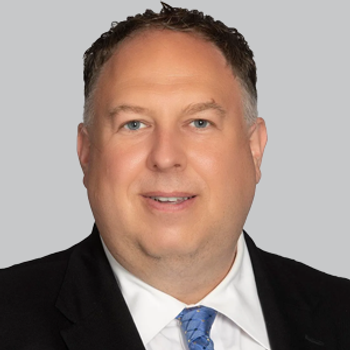
Goals of Therapy in Narcolepsy
Michael J. Thorpy, MD: So once we’ve actually been able to make a diagnosis of narcolepsy, then we need to treat it. Russ, what are the goals of treatment in narcolepsy?
Russell Rosenberg, PhD, DABSM: Well, we’ve talked about a number of the symptoms, so what we want to do is improve that patient’s functioning. I think we want everyone watching this to absolutely understand that this disorder of narcolepsy can have a profound impact on a person’s functioning. We want to encourage everyone to ask about these symptoms because the earlier we can detect narcolepsy, the better we can change that whole trajectory of that person’s life going forward.
Certainly, we want to improve on their excessive daytime sleepiness, and this can be tricky. I know we’ll talk about different ways to do this, but in regard to excessive sleepiness, making sure they’re safe in their environment and safe in what they do every day. We want to optimize their ability to learn, if they’re children. We want to make sure that they’re keeping up with other kids and that they’re able to participate in not only academic activities but sports activities and other activities they would enjoy doing—dancing or whatnot. And then we want to make sure that adults are able to maintain alertness at work so they can function properly and do their job. I think in most work situations, if you’re found asleep on the job, that results in an immediate firing. And so it has an economic impact as well.
Beyond that, we want to make sure that they can function in social relationships, and marriages, and whatever relationships they have, and that they don’t experience some of these other symptoms that Dr Avidan talked about like sleep paralysis, which can be frightening but can be treated as part of an overall package of pharmacotherapy. The frightening dreams or the hypnagogic or hypnopompic hallucinations—we spoke about this epic dreaming and so forth. So all of these REM phenomena can be treated and managed.
Something I think I’ll reference you for, Dr Thorpy, is that these patients never normalize. Despite everyone’s best efforts to adjust medications and to do what you can for patients—we’ll talk about non-pharmacologic treatments in a moment—the patient continues to struggle to manage or balance times they want to be awake, activities that they do. It’s very difficult, even with the advances in today’s therapies, to make them feel as if they’re not experiencing narcolepsy anymore. They’re always carrying this around with them.
Michael J. Thorpy, MD: How about safety of these patients? Is there a risk associated with narcolepsy?
Russell Rosenberg, PhD, DABSM: Oh, there’s absolutely a risk. We could talk about the excessive sleepiness and motor vehicle accidents. I think that can be affected, also, by cataplexy. I’ve had some adult patients who were so upset at people cutting them off while driving that they couldn’t pick up their leg to press the brake—and rear-ended somebody else. So I think both the sleepiness and the cataplexy can be a cause of accidents, either on the job or just in daytime functioning.
The other issue is cataplexy. Dr Avidan talked about the full-blown cataplexy attacks, where people go to the floor. There are certain situations where you just can’t do that, or you end up in a lot of trouble. So cataplexy and the sleepiness, together, really increase a number of risk factors.
Michael J. Thorpy, MD: Yeah. And there are a lot of jobs where people are at risk if they have cataplectic episodes or fall asleep on the job. Really, one of the goals is not only protecting them, but also protecting others around them.
Newsletter
Keep your finger on the pulse of neurology—subscribe to NeurologyLive for expert interviews, new data, and breakthrough treatment updates.




































